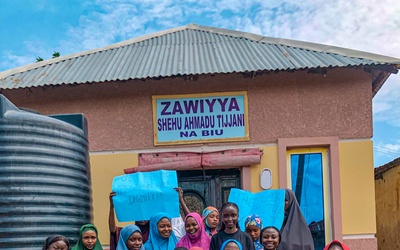Sexual and Reproductive Health complication and as it affects young people in our society, has indeed raised many eyebrow and created a yawning hollow in the heart of many. Young people obviously have an enormous task handling their reproductive health issues in view of the conflict between “wailing independence” and seemingly incompatible “over protection” from some parents, guardians and the society at large. However, with recent movements and campaign for an equipped understanding of sexual and reproductive health status in our immediate environ, its barriers and factors responsible and mitigating against a successful war arising from these problems, and an emphatic positive way forward; which is resultant to people being better informed with the needed skills to translate knowledge to practice and in the same vein, build a sound media capacity to disseminate and propagate correctly the crusade on sexual and reproductive health.
However, reproductive health we must know is the state of total physical, mental and social well-being and not merely the absence of disease or illness in all matters related to the reproductive systems and its importance and processes; and also sexual health as a part of reproductive health which includes sexual development, equitable and responsible relationship, sexual fulfillment, freedom from illness, disability, violence and other harmful practices related to sexuality, as a matter of pertinence, should be taught and the virtue imbibed among school children and adolescents.
Taking an eagle’s eye view of numerous sexual and reproductive health problems, which includes but not limited to unplanned pregnancy, multiple sexual partnership both serial and concurrent, early and forced marriage, low status of girls, transactional sex, sexual violence which does not exclude rape, non-consensual sex and sexual harassment, drug or substance abuse, HIV/AIDS etc, have all been attributed to problems of peer influence, decline in age menarche, gaps in intervention with much emphasis on increased knowledge and not behavior change, societal negative rectitude and resistance to increasing access of young people to appropriate information and services, negative effect of the media and poor parent-child communication on sexual and reproductive matters. These vices remain some of the factors that have contributed to the disheartening prevalence cases of sexual and reproductive health problems in our society.
Meeting adolescents sexual and reproductive health needs in our society is not just a governmental obligation, but a collective social responsibility of all citizenries. The fact remains that for us to get it right as youths, then a proper framework and foundation must be drafted and laid for our teenagers. We must as a matter of urgency begin to promote healthy sexual maturation from pre-adolescence and throughout the lifetime, and gender parity. We must endeavor to eliminate all harmful practices such as Female Genital Mutilation (FGM), child and domestic and sexual violence against women. A proper synergy between the family life and HIV education (FLHE) should be embraced by our institution of academic learning. There should also be adequate management of non-infectious conditions of the reproductive system, such genital fistula, cervical cancer, complications of FGM and capacity building for teachers at all level and youth friendly service providers. There should be a redress of the present situation, with a view to re-structure and develop a time bound strategic framework. In so doing, the crane for sexual and reproductive health awareness among our teens will be achieved for a better and proper sexual and reproductive health practices.








